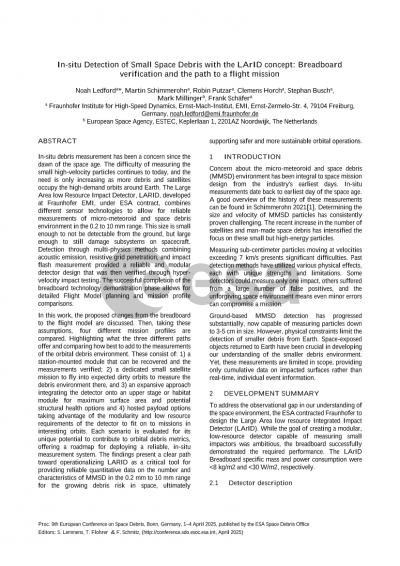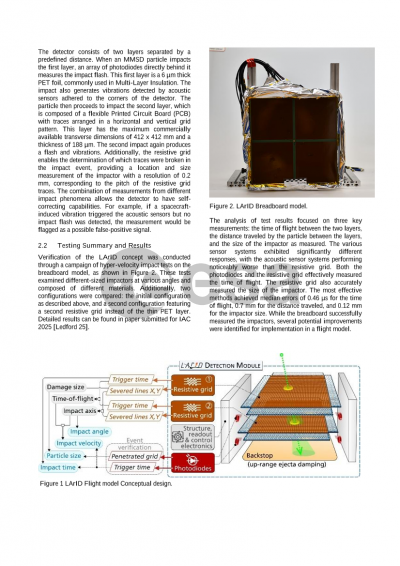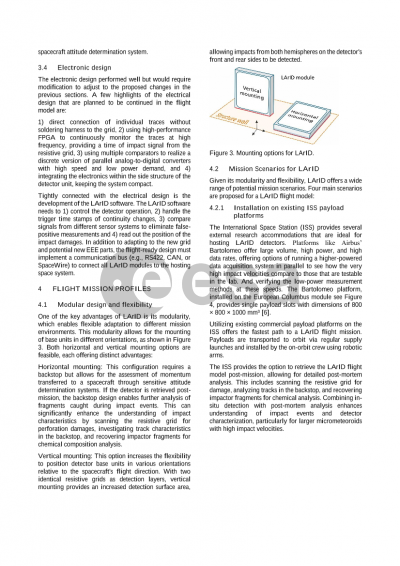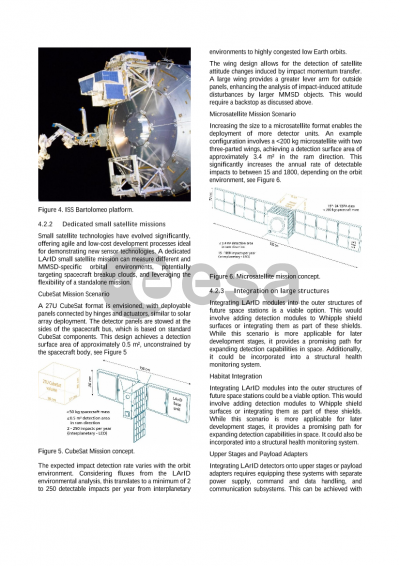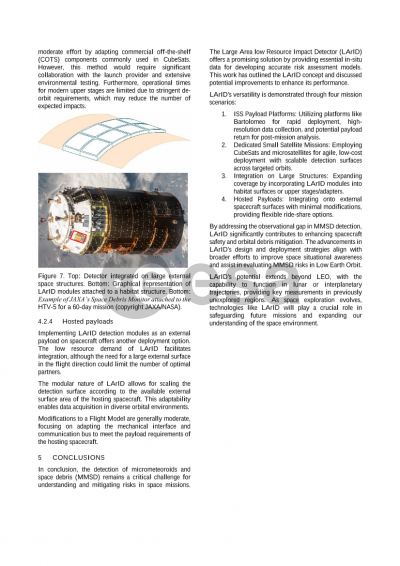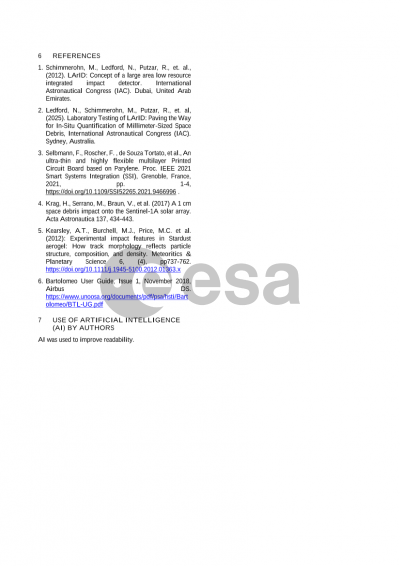Document details

Abstract
In-situ debris measurement has been a concern since the dawn of the space age. The difficulty of measuring the small high-velocity particles continues to today, and the need is only increasing as more debris and satellites occupy the high-demand orbits around Earth. The Large Area low Resource Impact Detector, LARID, the system developed at Fraunhofer EMI, under ESA contract, combines different sensor technologies to allow for reliable measurements of micro-meteoroid and space debris environment in the 0.2 to 10 mm range. This size is small enough to not be detectable from the ground, but large enough to still damage subsystems on spacecraft. Detection through multi-physics methods combining acoustic emission, resistive grid penetration, and impact flash measurement provided a reliable and modular detector design that was then verified through hyper-velocity impact testing. The successful completion of the breadboard technology demonstration phase allows for detailed Flight Model planning and mission profile comparisons.
In this work, the proposed changes from the breadboard to the flight model are discussed. Then, taking these assumptions, three different mission profiles are compared. Highlighting what the three different paths offer and comparing how best to add to the measurements of the orbital debris environment. These consist of: 1) a station-mounted module that can be recovered and the measurements verified; 2) a dedicated small satellite mission to fly into expected dirty orbits to measure the debris environment there, and 3) an expansive approach integrating the detector onto an upper stage or habitat module for maximum surface area and potential structural health options. Each scenario is evaluated for its unique potential to contribute to orbital debris metrics, offering a roadmap for deploying a reliable, in-situ measurement system. The findings present a clear path toward operationalizing LARID as a critical tool for providing reliable quantitative data on the number and characteristics of MMSD in the 0.2 mm to 10 mm range for the growing debris risk in space, ultimately supporting safer and more sustainable orbital operations.
Preview
